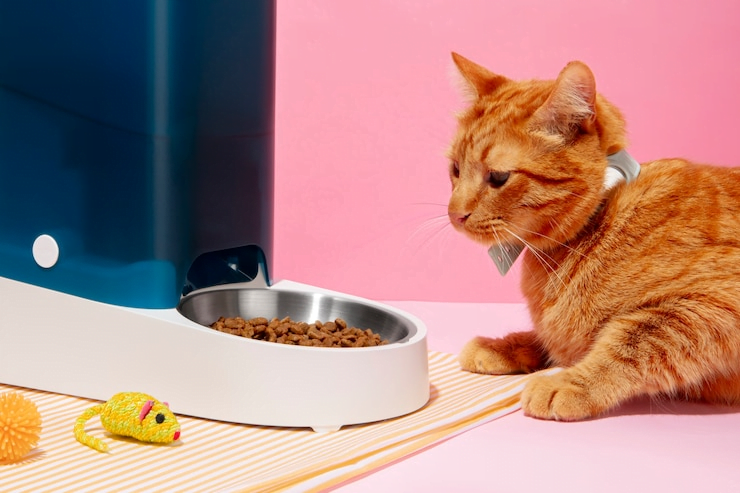If your furry friend is experiencing pain or inflammation, you might have come across Rheumocam as a possible solution. But what exactly is Rheumocam, and how can it help your feline companion? In this blog post, we’ll explore everything you need to know about using Rheumocam for cats, from its benefits and uses to potential side effects and safety precautions. By the end of this guide, you’ll be well-informed and confident in making decisions about your cat’s pain management.
How to Use Rheumocam for Cats?
Rheumocam, a non-steroidal anti-inflammatory drug (NSAID), is used to manage pain and inflammation in cats, commonly due to arthritis or post-surgery pain. It is typically administered in liquid form. The recommended starting dose is 0.1 mg/kg on the first day, followed by 0.05 mg/kg once daily. Administer it with food to minimize gastrointestinal upset. Use a syringe for precise dosing. Always follow the veterinarian’s prescription and guidelines, as incorrect dosing can be harmful. Monitor your cat for side effects like vomiting, diarrhoea, or lethargy, and report any concerns to your vet immediately. Regular check-ups are essential to ensure safe and effective treatment, Learn how to use Rheumocam for cats effectively to manage pain and inflammation. Ensure your pet’s well-being with proper care.
The Benefits and Uses of Rheumocam in Cats and Dogs
Rheumocam is a non-steroidal anti-inflammatory drug (NSAID) commonly used in veterinary medicine to manage pain and inflammation in cats and dogs. Its active ingredient, meloxicam, works by inhibiting the production of prostaglandins, which cause inflammation and pain in the body.

One of the primary benefits of Rheumocam is its effectiveness in reducing pain and inflammation associated with conditions such as arthritis, injuries, and post-surgical recovery. Cats and dogs suffering from these ailments can experience significant relief, improving mobility and quality of life.
Another advantage of Rheumocam is its relatively fast onset of action. Many pet owners report noticing improvements in their pets’ comfort and activity levels within a few days of starting treatment. This rapid relief is crucial for pets in acute pain or discomfort.
Potential Side Effects of Rheumocam In Pets
While Rheumocam can be highly effective in managing pain and inflammation, it’s essential to be aware of potential side effects. Like any medication, Rheumocam can cause adverse reactions in some pets. Common side effects include gastrointestinal issues such as vomiting, diarrhoea, and reduced appetite.
Rarely, more severe side effects can occur, including kidney or liver problems. Monitoring your pet closely while on Rheumocam and reporting any unusual symptoms to your veterinarian immediately is crucial. Regular blood tests may also be recommended to check for any signs of organ damage.
It’s worth noting that the risk of side effects can be minimized by carefully following your veterinarian’s dosage instructions. Never give your pet more Rheumocam than prescribed, and always administer the medication with food to reduce the chances of gastrointestinal upset.
Overdosing Dangers and Safety Precautions
An overdose of Rheumocam can be dangerous and potentially life-threatening for your pet. Symptoms of an overdose may include severe vomiting, diarrhoea, lethargy, and even seizures. If you suspect your pet has ingested too much Rheumocam, seek emergency veterinary care immediately.
To prevent accidental overdosing, always store Rheumocam out of reach of pets and children. Use a syringe or dropper to measure the correct dose accurately, and double-check the dosage before administering it to your pet.
Additionally, never combine Rheumocam with other NSAIDs or corticosteroids without your veterinarian’s approval, as this can increase the risk of adverse effects. Always inform your vet of different medications or supplements your pet takes to ensure safe and effective treatment.
Comparing Rheumocam To Other Pain Management Medications
Rheumocam is just one of many options for pain management for pets. Other commonly used NSAIDs include carprofen (Rimadyl) and deracoxib (Deramaxx). Each of these medications has its benefits and potential side effects, and the choice of drugs will depend on your pet’s specific needs and medical history.
Compared to some other NSAIDs, Rheumocam is often preferred for its relatively low risk of gastrointestinal side effects when used correctly. However, it’s essential to work closely with your veterinarian to determine your pet’s best pain management plan, as individual responses to medications can vary.
In addition to NSAIDs, other pain management options include opioids, gabapentin, and non-pharmacological treatments such as physical therapy and acupuncture. A multimodal approach that combines different therapies may provide the most effective relief for your pet.
Guidelines For Proper Use of Rheumocam At Home For Cats
Administering Rheumocam to your cat at home can be straightforward with the right approach. Here are some tips to ensure safe and effective use:

- Follow Prescription Instructions: Always follow your veterinarian’s dosage and administration instructions carefully. Only adjust the dose or frequency after consulting your vet.
- Use the Correct Measurement Tools: Use a syringe or dropper provided by your veterinarian to measure the exact dose. Avoid using household spoons, as they can be inaccurate.
- Administer with Food: Give Rheumocam with a meal to minimize the risk of gastrointestinal upset. If your cat refuses to eat, contact your vet for guidance.
- Monitor Your Cat: Keep a close eye on your cat for any signs of adverse reactions, such as changes in appetite, vomiting, or lethargy. Report any concerns to your veterinarian promptly.
- Store Safely: Keep Rheumocam out of reach of pets and children, and store it according to the instructions on the label to ensure its effectiveness.
Real-Life Experiences: Success Stories and Cautions
Many pet owners have successfully used Rheumocam to manage their cats‘ pain and inflammation. For example, one cat owner, Jennifer, shared her experience with her elderly cat, Max, who suffered from arthritis. After starting Rheumocam, Max significantly improved mobility and overall comfort, allowing him to enjoy his favourite activities again.
However, it’s essential to remain cautious and vigilant while using Rheumocam. Another pet owner, Sarah, reported that her cat developed gastrointestinal issues after starting the medication. With her veterinarian’s guidance, they adjusted the dosage and added a gastroprotectant, which resolved the problem.
These real-life stories highlight the importance of working closely with your veterinarian and monitoring your pet’s response to Rheumocam. Every pet is unique, and what works for one may not work for another.
Conclusion
Rheumocam can be a valuable tool in managing pain and inflammation in cats, providing significant relief and improving their quality of life. However, like any medication, it has potential risks and requires careful administration and monitoring.
You can make informed decisions about your cat’s pain management by understanding the benefits, potential side effects, and proper usage guidelines. Always consult your veterinarian for personalized advice and follow their recommendations closely.
If you have any questions or concerns about using a Rheumocam on your cat, don’t hesitate to contact your veterinarian. They can provide the guidance and support to ensure your furry friend remains comfortable and happy.
For more information on managing your pet’s health and well-being or to explore other pain management options, please get in touch with us or visit our website. Together, we can ensure your cat enjoys a pain-free and fulfilling life.
FAQ
How Quickly Does Rheumocam Work?
How quickly does Rheumocam work in cats and dogs? Rheumocam is fully absorbed within about 5 hours of eating it, which means improvement can be seen within just a few hours. However, depending on your pet’s condition and the level of inflammation present, it can take 4-5 days for Rheumocam to improve your pet’s pain.
Can You Put Rheumocam On Food?
To be administered either mixed with food or directly into the mouth at a dosage of 0.6 mg/kg body weight once daily, up to 14 days. If the product is mixed with food, it should be added to a small quantity of food prior to feeding.
Can You Give Rheumocam To Cats Without A Vet Prescription?
By law, we can only dispense these items if you possess a valid written veterinary prescription.
Is Rheumocam a Painkiller?
In cats, Rheumocam reduces post-operative pain and inflammation after ovariohysterectomy (spaying operation) and orthopaedic and minor soft tissue surgery. Moreover, it is used to lessen pain and inflammation in acute and chronic musculoskeletal disorders.













